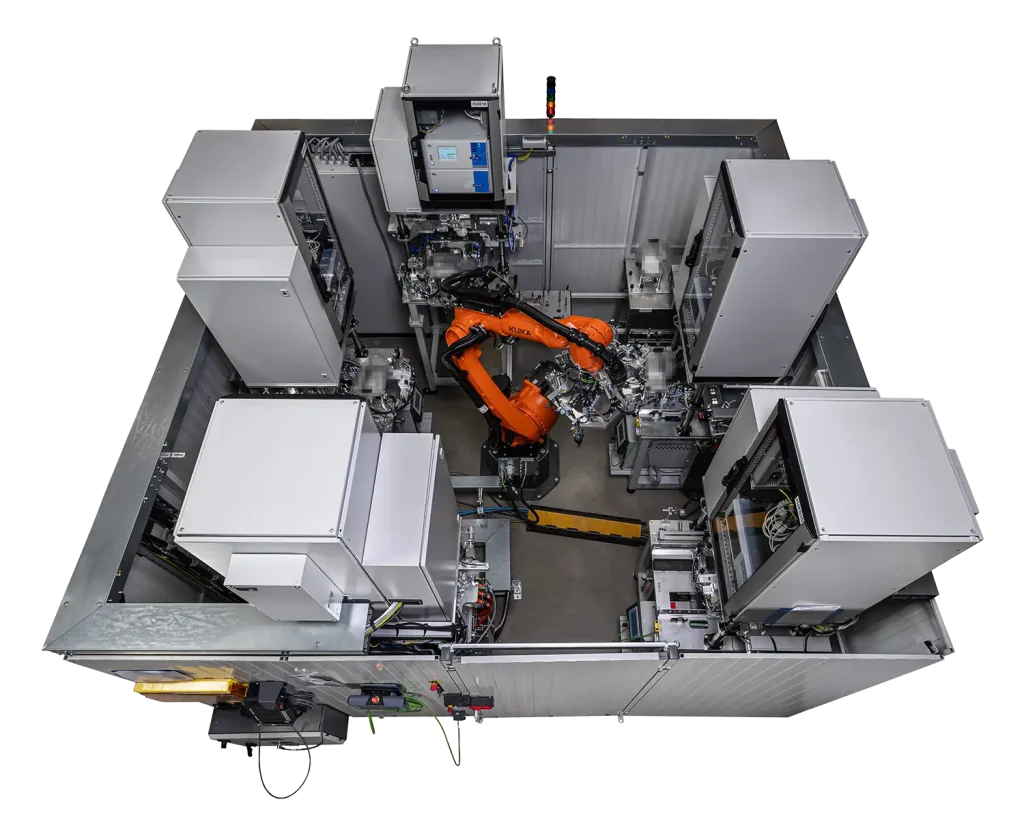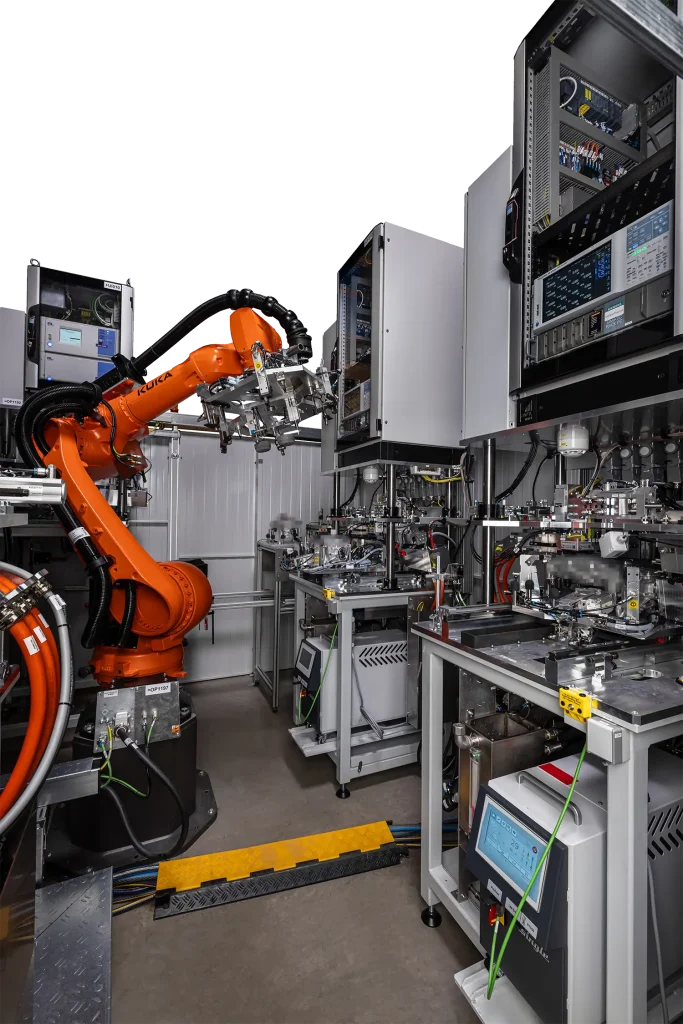Maximum throughput in a small area
950 inverters per shift despite only 20 m² system area
Little space. High quantities. No trade-offs.
How do you fit a fully automated inverter end-of-line test into an area barely larger than an average office? A customer presented AUTFORCE with this challenge – and it was as demanding as it was appealing: a high-performance test bench that could keep up with the pace of large-scale production with up to 950 inverters per shift was to be built on just 20 m².
The solution: a highly compact inverter EOL robot cell that not only impresses with its clever use of space, but also sets new standards in terms of automation, safety, and ease of maintenance. The result is a complete system that enables maximum testing performance with minimum space requirements—efficient, reliable, and cost-optimized.


AUTFORCE has developed a concept designed for maximum space efficiency and high testing performance.
The central element of the system is a highly compact robot cell that integrates four parallel functional test stations and an upstream insulation test station. The setup is supplemented by automated transfer stations, a calibration storage unit for reference parts and an end-to-end safety concept.
The inverters reach the test cell via a conveyor belt and are removed there by the robot. The transfer takes place at a transfer station, where the components are safely picked up from the belt and prepared for further processing.
In the first test step, the inverter is placed in an insulation test station. There:
The robot positions the component precisely in the test fixture. Pneumatic clamping systems ensure a tight fit during the measurements. The test sequence is carried out automatically and the result is transmitted digitally to the system.
After the successful insulation test, the inverter is removed from the robot and fed to one of four function test stations of the same design. These allow the test sequences to be run simultaneously.
The functionality of the inverters is tested under realistic conditions. Contact is made via:
The DUT (device under test) is fixed and contacted via a clamping system. After the automated function test, the DUT is removed again.
The robot then places the inspected inverter back on the conveyor belt. From there, the component is transported onwards.
Two reference inverters are available for regular calibrations. After a predefined number of cycles, the robot removes the appropriate part and takes it to the relevant test station. This ensures that the quality of the measurement results is permanently guaranteed.
Not every production environment has the same requirements, which is why there is not just one solution. Whether it’s a flexible pre-series or a fully synchronized large-scale line, our testing concepts can be tailored to your needs. Here is an overview of two particularly proven variants:
Manual or semi-automated test stations can be implemented for pre-series production or variable test scenarios. These use the same test architecture, but rely on manual handling and allow quick adjustments – ideal for flexible test environments or changing test programs.
Where space is available and the highest degree of automation is required, integration into existing conveyor lines is an option. Inverters are seamlessly integrated into the production flow and test stations are cycle-controlled – for uninterrupted inline testing without detours or time losses.
At AUTFORCE, we specialise in testing systems and industrial software. Get in touch with us. Together we will find the best solution for your task or project!
Rainer Jung
Inverter testing expert
+49 (160) 922 32 979
[email protected]
Get a non-binding initial assessment now: